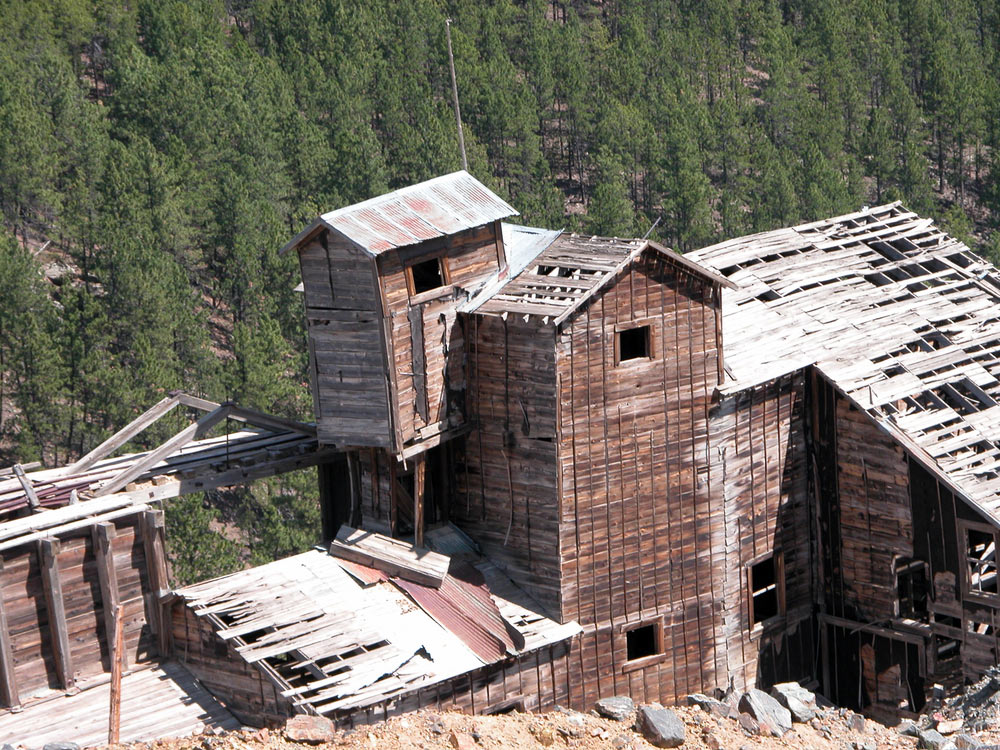
Montana's Missouri River Country


Gold established the community of Zortman. Although gold prospecting took place as early as the late 1860s, it wasn’t until approximately 1890 when Pike Landusky and Bob Ormond struck a rich vein that the town of Zortman was born. It was named after Oliver “Pete” Zortman, who with a partner constructed a mill near Zortman that initiated the extraction of low-grade ore from rock.
Many mines were sunk into the mountainsides, the most prosperous being the Ruby Gulch in 1904. It produced as much as $14,000 per day in gold bullion. In spite of a destructive fire in 1912, the mine flourished until World War I. The mine then shut down until the early 1930s at which time the Little Ben Mining Company was formed and the Ruby Gulch mines were reopened. This mill became the second largest cyanide mill in the world during its time of operation. Approximately 2,000 people resided in the Zortman area in the early 1920s.
In 1936 a destructive wildfire swept through the Little Rockies destroying the majority of the mining operation. It is estimated that the mines at Zortman, Landusky and Beaver Creek produced $125 million in gold before the shut down in 1949.
Today, Zortman has switched its role from a bustling prosperous mining town to a quaint and nostalgic village of approximately 60 residents. Historic log cabins and miners’ shacks lean between modern buildings and trailers in a mishmash of architecture. A white clapboard church, elegant in its simple design, sits high above the town on a grassy mountainside.
Out of Zortman there are roads and trails that will enable you to climb up high into the hills to enjoy some great views of the prairie country spread out before you to the east. Following US Highway 191 north from the Zortman road, you’ll traverse the former Circle C Ranch range, one of the first big cattle operations in these parts. The same area was also a segment of the trail of the legendary long drives of longhorn cattle up 1,800 miles from Texas to winter in Montana. With the passing of the bison, the land became cattle country and still is today.
Visitors to this eastern Montana town can enjoy the nearby Little Rocky Mountains and the UL Bend National Wildlife Refuge. Together with the surrounding C. M. Russell National Wildlife Refuge, the UL Bend is the only place in Montana where elk still occupy their native prairie year-round. Other inhabitants are deer, pronghorn antelope, birds and small animals.
Search By Name
Search By Area
Search By Type